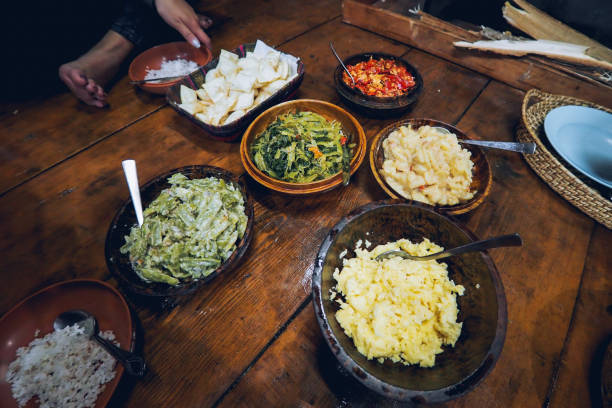Discovering the Unexplored: The Wonders of Bhutanese Cuisine
In the heart of the Himalayas, a unique culinary tradition has been passed down through generations, largely untouched by the outside world. Bhutanese cuisine is as diverse as the country's culture and geography. This article dives into this unexplored culinary world, offering an insight into traditional Bhutanese dishes, cooking techniques, and the cultural importance of food in Bhutan.

Bhutanese Food: A Blend of the Familiar and the Exotic
Bhutanese cuisine is a hidden gem in the world of gastronomy. It is a blend of traditional Himalayan flavors and unique ingredients that are native to Bhutan. The most commonly used ingredients in Bhutanese cooking are red and white rice, yak meat, dairy products, and an array of local vegetables and spices.
The Staple: Ema Datshi
Ema Datshi, Bhutan’s national dish, is a fiery blend of chili peppers and cheese. It is a staple in every Bhutanese household and is served with almost every meal. The heat of the chilies contrasts beautifully with the creaminess of the cheese, creating a dish that is both comforting and exciting.
Cooking Techniques: Steam and Smoke
In Bhutan, food is often slow-cooked over a wood fire or steamed. This not only enhances the flavors of the ingredients but also imparts a smoky flavor that is characteristic of Bhutanese cuisine. Dishes like momos (dumplings) and Jasha Maru (spicy chicken) are examples of this cooking technique.
The Role of Food in Bhutanese Culture
In Bhutanese culture, food plays a significant role in social and religious events. Bhutanese people do not take eating lightly – meals are a time for the family to come together and connect. Traditional dishes are also prepared for festivals, religious ceremonies, and special occasions.
- The Bhutanese believe in eating in moderation and focus on balance in their diet.
- Bhutan is the only country in the world where the sale of tobacco is illegal. Instead, they use Doma, a mixture of betel leaf and areca nut, as a post-meal digestive.
- The Bhutanese government promotes organic farming, making Bhutan’s food some of the purest in the world.
The Future of Bhutanese Cuisine
Bhutanese cuisine, with its unique flavors and cooking techniques, has the potential to make its mark on the global food scene. As more people discover this unexplored culinary tradition, the world will have a chance to taste the true flavors of the Himalayas.
Bhutanese cuisine is a testament to the country’s rich culture and traditions. It offers a palate of flavors that are as diverse as the country’s landscape. From the heat of Ema Datshi to the smokiness of dishes cooked over wood fire, every bite tells a story of Bhutan’s culinary heritage. As we continue to explore global cuisines, let’s not forget to venture into lesser-known territories like Bhutan – because sometimes, that’s where the real treasure lies.




